When towns are built to be walkable and to the scale of people, they change fundamentally. Brought within sight and touch to passersby, pedestrian street-facing facades in walkable towns allow for thoughtful detail and design so that simple elements like doors add character to the street.
Shops, restaurants, and storefronts can be heavily designed and detailed, as pedestrians have time to look at each one as they walk past, rather than moving quickly in a car. Within the walkable town of Las Catalinas, the doors of Santarena hotel offer themselves as marked and detailed gifts to the street.
Read on to see the history, purpose, and artistry behind the doors of The Santarena Hotel.
An Open Invitation
A door itself is simply a functional architectural element, part of the interior decoration, but the expectation that we have of what behind gives them meaning. By engaging with this meaning, and doors’ important role as transitions between places, the artistry of doors creates unique value, inspiring awe, and emotion.
The cedar front door of Santarena Hotel is the perfect example. Made in wood shop on site, in its simplicity it’s inviting and candid; guests see what is behind the glass panels, the lobby, yet it’s possible to glimpse the playa on the other side of the building, making this a welcoming entrance.
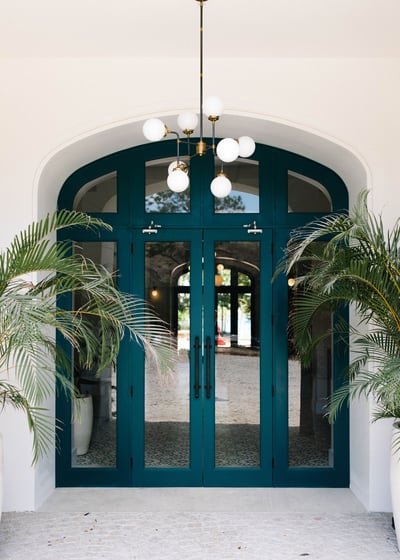
The opposing doors on the Plaza Danta side of Santarena are particularly versatile, and a great example of tropical architecture and design.
Three-door frames equal in size, shape, and color connect Ponciana restaurant's dining terrace to Playa Danta. This simultaneously allows Santarena guests to take a peek into Ponciana from the lobby and overs visitors of town on Playa Danta an invitation for entry. True to the timeless tropical feel of Las Catalinas, the porous and numerous openings also let in a generous amount of sunlight during the day and let glamorous light diffuse out into town at night.
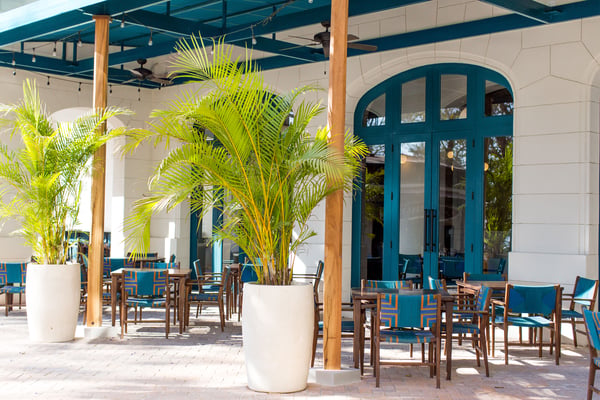
The Traditional Purpose and Tandem Elements of Doors
Town Architect at Las Catalinas, Juan Carlos Avelar, explains the traditional purpose of doors, saying:
“Doors are important in traditional architecture as they have many purposes. First, they help us identify the kind of building we are about to enter. A town hall will have a large and elaborate door, but a house will have a colorful, playful, yet welcoming one. Doors are intended to be a gift to the street, meaning that pedestrians should enjoy the variety of colors, materials, and proportions they have.”
Avelar went on to elaborate that doors often work in tandem with other elements. They may come with other accompanying features such as stone frames, elaborate cornices, lattices, and other elements that can enrich the spectator’s experience and provoke curiosity.
Some doors may even be designed with tandem elements to cool and refresh.
The gray guest room doors leading from the hallways to each guest suite accomplish just that. Painted in a cooling grey and lined along breezy covered open-air hallways, these doors facilitate a transition to the cool air-conditioned rooms from the sun and heat outside.
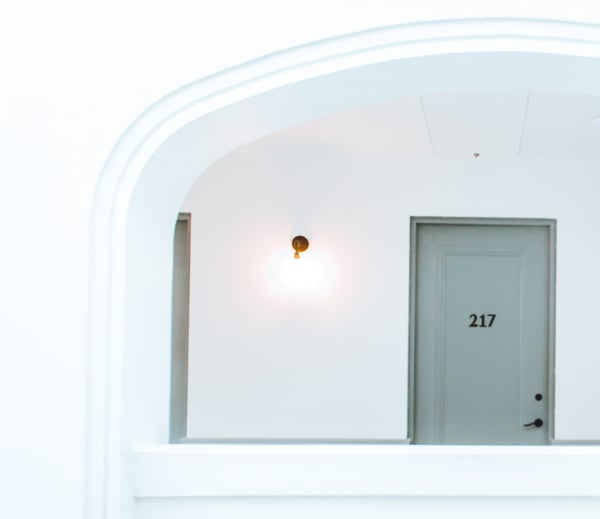
Doors also separate moods and ambiances. The elegant wood vestibule entry separating the interior courtyard to the Conservatory acts as a transition and gate between noises of life the breakout public courtyard space and private event space inside.
The wood frames introduce visitors to the beautiful solid hardwood floors inside and are finished similarly to and keep to the same traditional style of the architecture as the timeless tropical homes within the town of Las Catalinas.
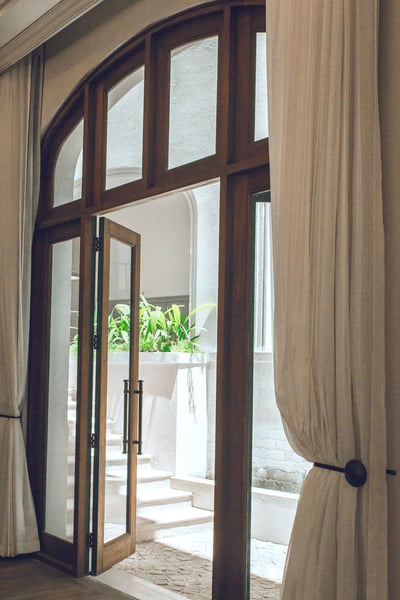
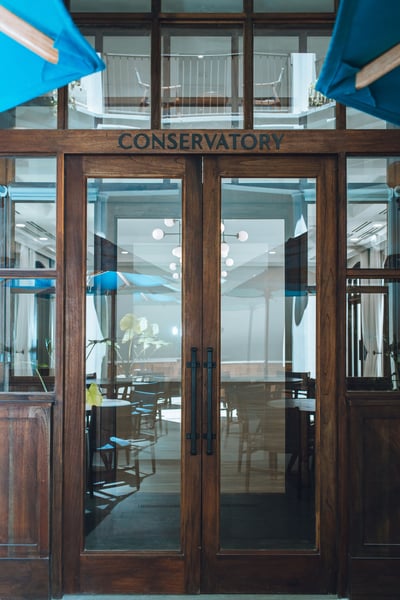
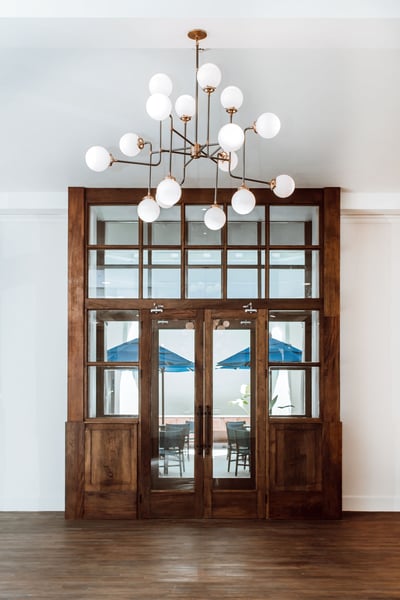
The sliding barn-style white door in the rooms and the glass doors separating Ponciana Restaurant and the Lobby from the Atrium area also keep ambients and moods separate at Santarena.
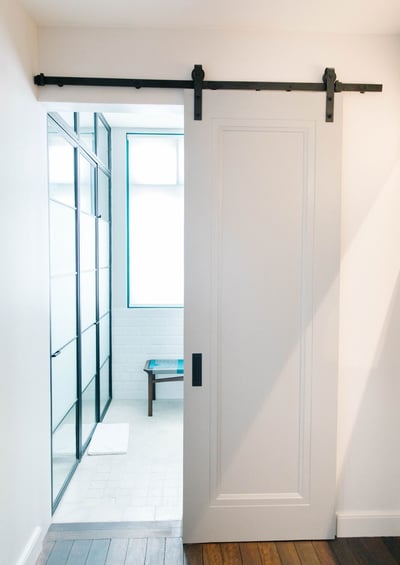
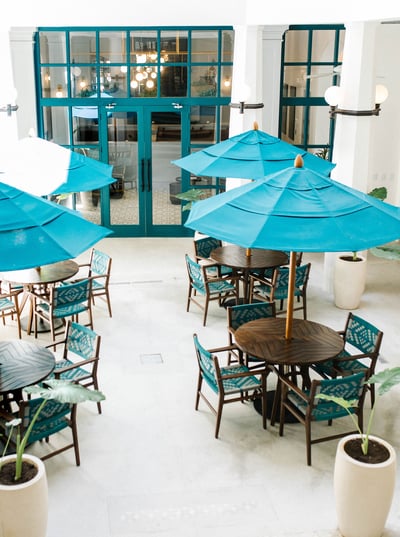
Some doors fill a more practical function at Santarena. The fire exit door at Santarena is a great example of how “door hierarchy” works, serving a utilitarian purpose thus intentionally planned with less detail and decoration It is of simple design, painted white because it is intended to blend in with the exterior facade and not call attention from the outside. Its simplicity is understatedly attractive.
Meanwhile, the window doors in the rooms with a balcony help transition between the indoors and the exterior; painted in the same teal palette that provides continuity between public and private areas.
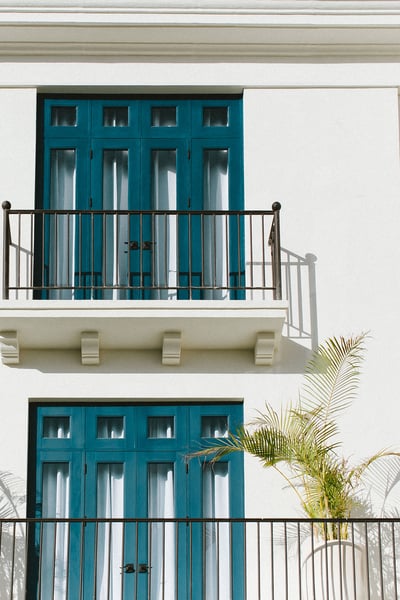
Let Yourself In
A door can be a basic element, but it can also invite deep sentiment. This is not because the door itself is important, but it represents a transition that could bring unique experiences. At Santarena Hotel in Las Catalinas, they are always open.
To see what actually lies behind each of these doors, browse through the hotel’s photo gallery.




